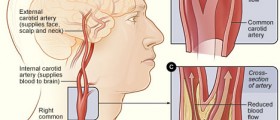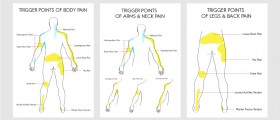
Horner’s syndrome (or Bernard-Horner syndrome) is medical condition known for the combination of symptoms which include: constriction of the pupil (miosis), loss of hemifacial sweating (condition known as anhidrosis) and partial drooping of the eyelid (ptosis). This syndrome is known to be caused by the interruption of supply to the eye via the sympathetic nerve.
Horner’s syndrome was first described in 1727 in animals and then 1838 in human patient suffering from tumor in the cervical area. Over the years, doctors also came across rare inherited form of this syndrome.
Conditions Associated with Horner’s Syndrome
Lesions of the primary neuron, as well as brainstem stroke are often seen to cause Horner’s syndrome and about the third of all patients diagnosed with brainstem lesions have this syndrome. Patients suffering from tumor or syrinx of the preganglionic neuron may also develop Horner’s syndrome. Lesions of the postganglionic neuron, infections or tumors of the lung apex, as well as some traumas to the brachial plexus could also lead to this syndrome.
Migraines and middle cranial fossa neoplasm may also provoke the same problem and the same goes for carotid artery ischemia and dissecting carotid aneurism. Patients with internal extracranial carotid artery dissections reported painful Horner’s syndrome in more than 40% in one study, but the problem stayed isolated in some of these people.
Horner’s syndrome can be iatrogenic condition, caused by complication of procedures used to treat the neck, chest or ear, throat and nose (otolaryngologic procedures). In certain cases, patients have reported ptosis due to Botox injections given in order to improve glabellar lines.Possible Symptoms
Symptoms of Horner’s syndrome depend on the cause of the problem. Some of the patients have reported inability to open the eye affected by Horner’s syndrome completely, while others reported inability to sweat on affected side of the face.
Preganglionic lesions have been known to cause facial flushing (redness of the face) called harlequin effect and this has been seen in patients engaged in some physical exercise. Postganglionic lesions could provoke orbital pain or migraine headaches in some cases.
Horner’s syndrome due to carotid artery dissection could affect the head, face or the neck, causing the pain in these areas of the body.
Patients suffering from Horner’s syndrome may also experience paratrigeminal syndrome (combination or miosis, ptosis and orbital pain). These symptoms may indicate mass lesion in the middle cranial fossa if they happen to be combined with lesions of the cranial nerves. They could also indicate migraine headaches, if there are no associated cranial nerve problems.

















Your thoughts on this
Loading...